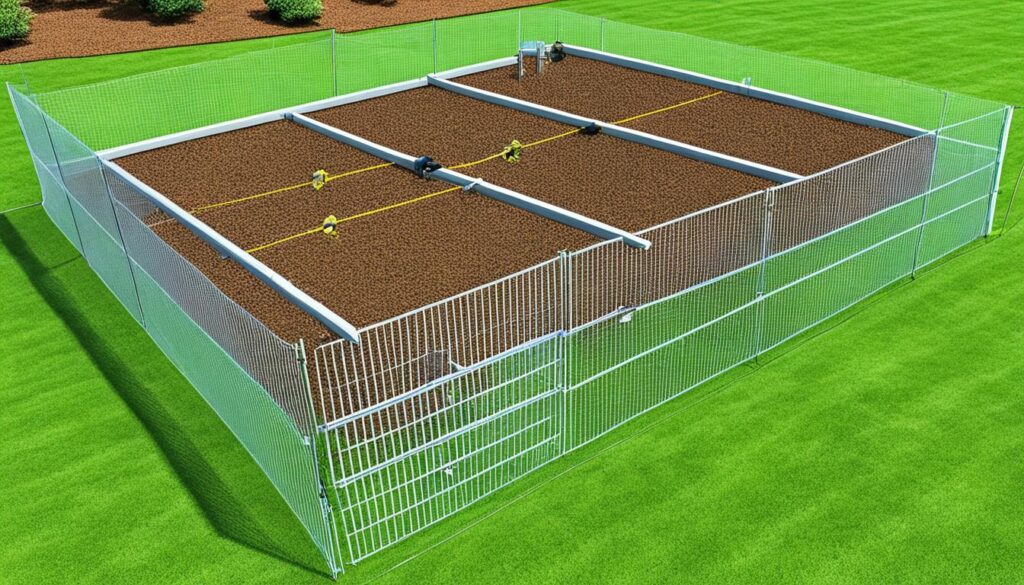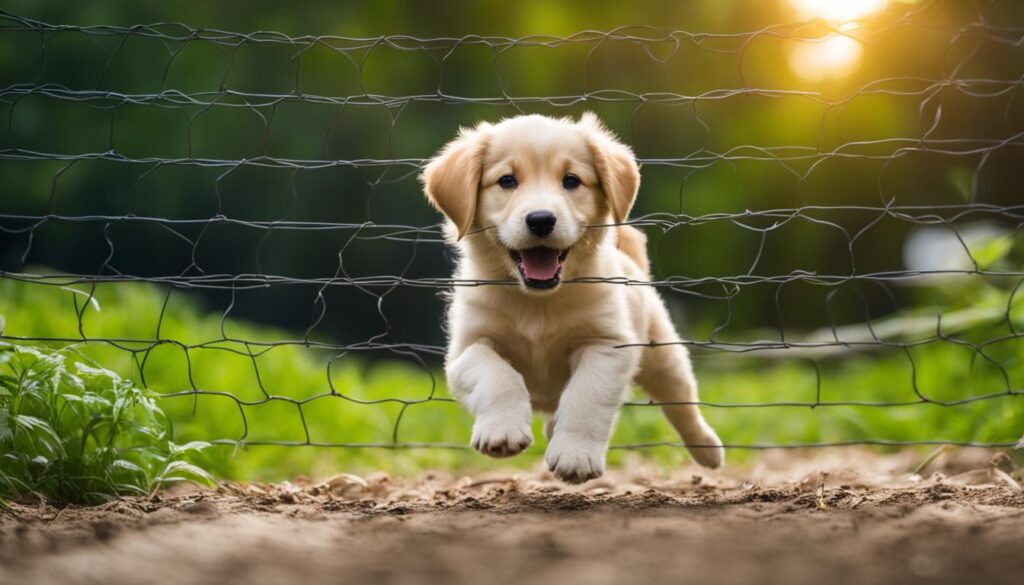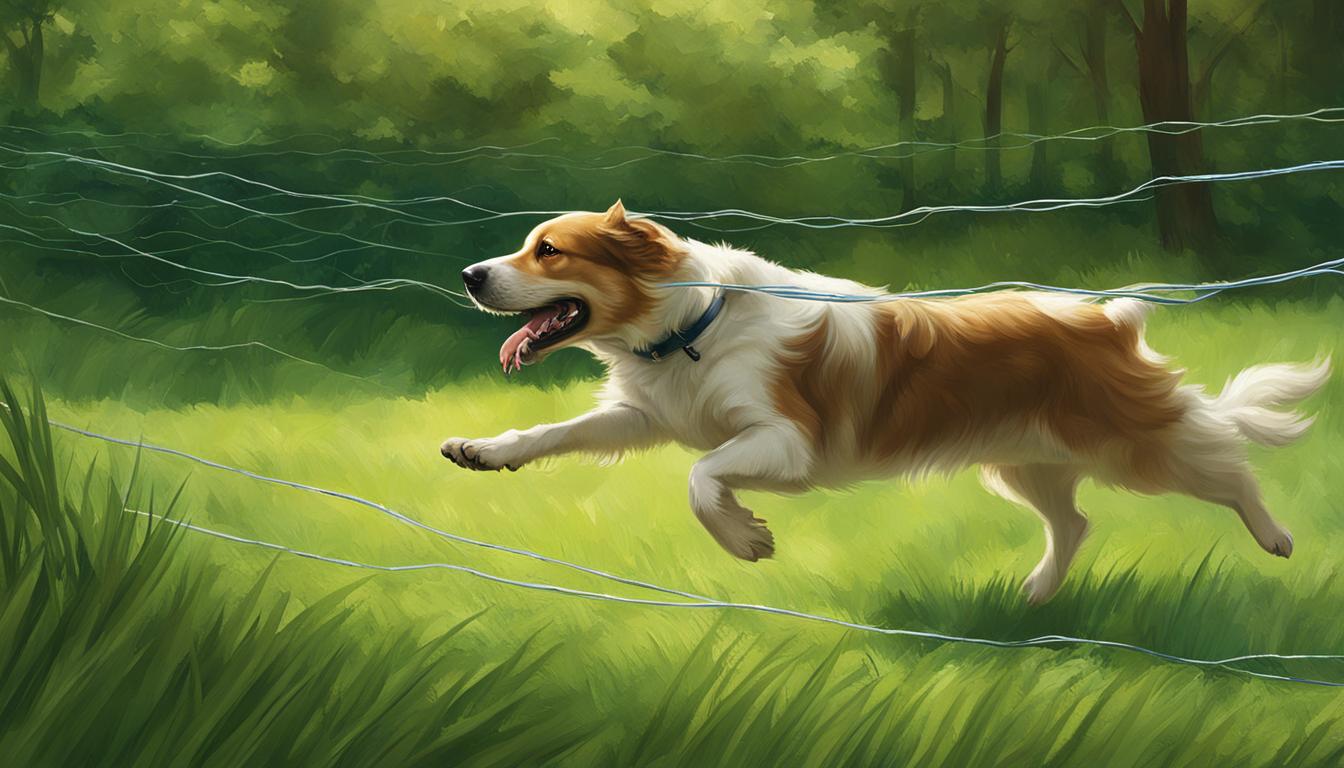As an Amazon Associate I earn from qualifying purchases.
Imagine this: it’s a beautiful sunny day, and you decide to take your beloved furry friend, Max, for a stroll in the park. You arrive at your favorite spot, a peaceful open field where Max can roam freely and explore to his heart’s content. As you watch him frolic in the grass, chasing butterflies and wagging his tail with pure joy, a wave of happiness washes over you. This is the kind of moment that fills your soul, knowing that Max is safe and happy.
But then, out of nowhere, something catches Max’s attention. He darts off towards the nearby road, completely oblivious to the potential danger that lies ahead. Panic sets in as you desperately call out his name, but it’s too late. You can only watch in horror as a car speeds by, narrowly missing him.
It’s moments like these that remind us just how important it is to keep our furry friends safe and secure. Dogs are adventurous creatures by nature, and while we want them to enjoy their freedom, we also need to protect them from potential hazards. That’s where an electric fence for dogs can make all the difference.
An electric fence for dogs, also known as an invisible dog fence or a containment system for dogs, offers a practical and effective solution to keep your pup safely within your property boundaries. It’s a wireless dog fence that uses an electric pet fence collar to create invisible boundaries that your dog learns to respect over time.
Key Takeaways:
- An electric fence for dogs provides a practical and cost-effective solution to keep your pup safe within your property boundaries.
- It creates invisible boundaries that your dog learns to respect, minimizing the risk of accidents and potential dangers.
- Wireless and adaptable to various terrains, an electric fence offers an aesthetic appeal without obstructing your view.
- Training is crucial for success, ensuring that your dog understands and respects the boundaries of the fence.
- While an electric fence offers safety, it’s important to consider potential limitations and prioritize your dog’s well-being.
Advantages of an Electric Fence for Dogs
While traditional fences have been a popular choice for containing dogs in a yard, electric fences offer several unique advantages. Here are the top reasons why an electric fence can be a great option for keeping your furry companion safe and secure:
- Cost-effective: Compared to the cost of installing a traditional fence, an electric fence for dogs is a more budget-friendly option. It eliminates the need for expensive materials and professional installation, making it an affordable choice for pet owners.
- Adaptability to different terrains: Electric fences can be easily installed on various terrains, including hilly areas and uneven landscapes. They provide the flexibility to create customized boundaries that suit your yard’s unique layout.
- Invisible aesthetics: Unlike traditional fences that can obstruct views and give a confined feel, electric fences are virtually invisible. They offer an unobstructed view of your surroundings, preserving the beauty of your property while keeping your furry friend safe.
- Quick installation: Erecting a traditional fence can be a time-consuming process. On the other hand, electric fences can be installed quickly and easily. With the right guidance and equipment, you can set up the fence in no time.
- Containment for escape artists: Some dogs are natural escape artists and tend to find their way out of traditional fences. An electric fence provides an additional layer of containment, preventing these Houdini-like pups from wandering off and ensuring their safety.
- Reduced human error: Forgetting to close a gate or accidentally leaving it open can lead to a pet escaping the yard. Electric fences eliminate the risk of human error by creating an invisible barrier that automatically keeps your dog within the designated boundaries.
- Deterrent for intruders: The presence of a dog in a yard protected by an electric fence can act as a deterrent to potential intruders. The invisible barrier, coupled with a pet’s protective instincts, can help keep unwanted visitors at bay.
However, it is important to remember that training is required for dogs to learn the boundaries of the fence. Additionally, electric fences do not prevent other animals or hazards from entering the yard, and they may restrict dogs from interacting with other animals and humans.
With the advantages and considerations in mind, an electric fence can provide a safe and cost-effective solution for containing your furry friend. In the next section, we will explore important considerations when using electric fences for dogs.
Considerations with Electric Fences for Dogs
While electric fences for dogs offer numerous advantages, it’s important to take certain considerations into account when deciding whether it’s the right choice for your furry friend.
1. Training and Boundary Recognition
Dogs need to be properly trained to recognize the boundaries set by the electric fence. Without proper training, they may not understand and respect the limits, which can result in them escaping or breaching the fence. Consistent training and reinforcement are crucial to ensure your dog’s safety and containment.
2. Limited Protection from Hazards
An electric fence alone may not provide complete protection from external hazards, such as stray dogs or wild animals. While it helps keep your dog within the designated area, it’s essential to assess the overall security of the perimeter to ensure the safety of your pet.
3. Frustration from Restricted Interaction
Some dogs may become frustrated or anxious when they see other dogs or humans outside the electric fence. They may long for social interaction, leading to potential behavioral issues. It’s important to consider alternative ways to socialize and engage with your dog to prevent boredom and frustration.
4. Discomfort and Stimulus Settings
The level of discomfort dogs experience from the electric stimulus depends on the settings of the electric fence. It’s crucial to find the right balance between effective containment and minimizing any unnecessary distress for your dog. Regularly monitor and adjust the stimulus intensity based on your dog’s response and comfort.
5. Reliability and Power Supply Interruptions
Ensuring the reliability of the electric fence is essential, especially in case of power supply interruptions. Regularly test the system and have a backup plan in case of electrical outages to prevent potential breach scenarios.
6. Moments of Strong Stimuli or Fear
Some dogs may become overwhelmed by strong stimuli or fear, causing them to breach the electric fence. It’s important to observe your dog’s behavior during such situations and address any potential triggers to avoid unsafe situations.
While electric fences for dogs can be effective containment solutions, it’s crucial to weigh the advantages and considerations before making a decision. Assessing your dog’s specific needs and temperament will help determine if an electric fence is the right choice for your furry companion.
| Advantages of Electric Fences for Dogs | Considerations with Electric Fences for Dogs |
|---|---|
| 1. Cost-effective compared to traditional fences | 1. Training and boundary recognition |
| 2. Adaptable to different terrains | 2. Limited protection from hazards |
| 3. Invisible aesthetics that don’t obstruct views | 3. Frustration from restricted interaction |
| 4. Quick installation process | 4. Discomfort and stimulus settings |
| 5. Helps contain dogs that tend to escape | 5. Reliability and power supply interruptions |
| 6. Reduces human error in closing gates | 6. Moments of strong stimuli or fear |

Introducing Electric Fences to Puppies
When it comes to keeping your furry friend safe and secure, an electric fence for dogs can be a great solution. But what about puppies? How do you introduce them to this pet containment system without causing unnecessary stress or trauma? Let’s dive into some tips and best practices.
Age Matters
First and foremost, it’s essential to wait until your puppy is at least four or five months old before introducing them to an electric fence. This age threshold helps minimize the chances of traumatizing them during the training process. Remember, puppies are still learning and growing, so it’s crucial to take things at their own pace.
Adjustable Settings
Using an electric fence with adjustable settings is key when training puppies. Start with the lightest setting to gradually introduce them to the concept of boundaries. This step-by-step approach allows your puppy to become familiar with the fence without overwhelming them. It’s all about finding the right balance that ensures their safety and comfort.
Keep an Eye on Fear
During the training process, pay close attention to any signs of fear or distress in your puppy. If you notice them exhibiting signs of anxiety or stress, immediately stop the training session. It’s crucial to prioritize your puppy’s well-being and emotional state throughout the introduction to the electric fence.
“Positive training methods are crucial when introducing puppies to an electric fence. Focus on rewards, praise, and patience to help them associate the boundaries with positive experiences.”
Read the Instructions
Before starting the training process, be sure to thoroughly read and understand the instructions provided by the electric fence manufacturer. Each system may have specific guidelines or considerations that are essential for your puppy’s safety and effective training. By following the manufacturer’s guidance, you can ensure a seamless and successful training experience.
Boundaries for a Better Life
A properly trained puppy can benefit greatly from the boundaries established by an electric fence. It allows them the freedom and security to explore their designated area without the risk of wandering off or getting into harm’s way. With proper training, your puppy will not only understand their limits but also develop a sense of security within their designated space.
| Pros | Cons |
|---|---|
| – Provides safety and security for puppies – Allows them to explore within boundaries – Establishes a sense of security and freedom |
– Requires careful training and supervision – Potential for causing fear or distress if not done correctly – Must be introduced at the right age |
Takeaway
Introducing an electric fence to puppies requires patience, careful training, and consideration of their well-being. By waiting until they are old enough, using adjustable settings, reading the instructions, and prioritizing positive training methods, you can successfully introduce your puppy to the benefits of an electric fence. Remember, the goal is to provide them with the safety and security they need while allowing them the freedom to thrive within their boundaries.

Conclusion
When it comes to keeping your furry friend safe and contained, investing in an electric fence for dogs can be a practical and versatile solution. However, it is crucial to approach this decision with careful consideration and thorough research to ensure the best outcome for you and your pet.
One of the key factors to keep in mind is the importance of proper training. By taking the time to train your dog to understand the boundaries set by the electric fence, you can effectively prevent them from wandering off and ensure their safety. Utilizing appropriate training methods and techniques will help create a positive and successful experience for both you and your pup.
Additionally, selecting the best electric fence for dogs is paramount. Consider factors such as the size of your yard, the breed and behavior of your dog, and any specific features or functionalities that would benefit your unique situation. By choosing the right pet containment system, you can establish a secure environment while providing your dog with the freedom to enjoy the outdoors.
In conclusion, an electric fence for dogs offers a cost-effective and adaptable solution for containing your canine companion. However, it is important to acknowledge the advantages and disadvantages, prioritize your dog’s safety, and conduct thorough research before making a decision. With the right electric fence and proper training, you can provide your furry friend with the protection and peace of mind they deserve.
FAQ
Can an electric fence for dogs be used with any breed?
Are electric fences effective for containing multiple dogs?
Will an electric fence keep other animals out of my yard?
How can I train my dog to recognize the boundaries of the electric fence?
Can a power outage affect the effectiveness of an electric fence?
How old should my puppy be before I introduce them to an electric fence?
Are electric fences safe for puppies?
What is the best electric fence for dogs?
Source Links
- https://vcahospitals.com/know-your-pet/the-pros-and-cons-of-invisible-fences-for-dogs
- https://www.hitecpet.com/electric-fences.html
- https://www.k9electronics.com/blog/containment/how-old-your-puppy-should-be-when-introduced-to-the-electric-dog-fence
As an Amazon Associate I earn from qualifying purchases.

